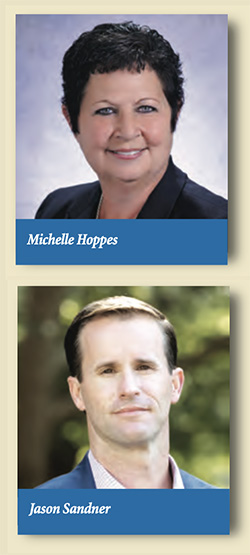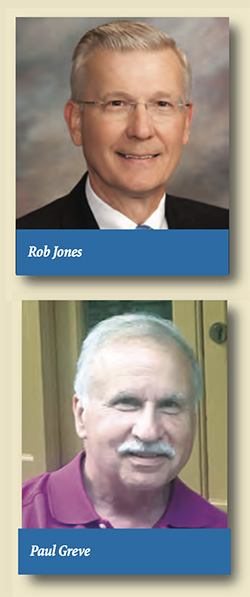That’s because healthcare consolidation isn’t likely to slow, at least in the near and mid-term, which means that MPL carriers must position themselves astutely to thrive in this continuing reality.
While there is robust consolidation and mergers and acquisitions activity across virtually all healthcare subsectors, the physician practice and hospital/healthcare system subsectors are most relevant to MPL carriers. Many legacy MPL carriers were founded to serve the provider—physician—market in the 1970s and 1980s. Over time, some of those companies expanded to serve the hospital and health system market.
Fewer and larger physician practices and hospital/health systems creates a smaller addressable market for MPL carriers. That means carriers are chasing a shrinking number of physician practices and other providers needing coverage. As hospitals and healthcare systems get larger and physician practices consolidate, many gain coverage through already established captives or new captives, further circumscribing the market.

The scope of the challenge depends on the individual organization. “It’s going to make a big difference, the structure of the MPL company, their size, their geography, and their capital position,” said Michelle Hoppes, CEO at Michigan Professional Insurance Exchange (MPIE).
Issues for virtually all MPL carriers include the formation of captives and risk retention groups, increasing sophistication of providers and hospitals in terms of insurance and risk management, and competition within larger provider and hospital groups.
“As practices and hospitals consolidate, that translates into larger, more complex organizations,” said Jason Sandner, CEO of Curi. “This is the point at which many start to think about their risk transfer needs differently. Their risk tolerance expands, they have more financial wherewithal, they have more sophisticated management, which means higher expectations from an MPL insurance perspective. They’re not necessarily as interested in the traditional off-the-shelf insurance product that we in the industry have traditionally offered.”
Healthcare Consolidation Trends
Marked shifts in the physician practice market have occurred since 2012, reaching the point where fewer than half of all patient care physicians were employed in private practice wholly owned by physicians as of 2020, according to the American Medical Association.1 In addition, the average size of physician practices has increased with practices of 50 or more physicians rising to 17.2% in 2020 from 14.7% in 2018.
While physician practices experienced significant consolidation and mergers and acquisitions activity prior to the COVID-19 pandemic, the pandemic further sped up that activity. Between 2019 and 2021, more than 100,000 physicians became employees. As of the end of 2021, nearly three of four physicians were employed by health systems, hospitals, private equity firms, and other organizations.
Hospital consolidation continues, but is also occurring at a slower pace than physician practice consolidation. In 2021, there were 49 hospital mergers in contrast with the more than 70 mergers a year that occurred in the 10 years between 2011 and 2020.5 That’s because hospital and health system consolidation has been underway for decades. Many smaller community organizations have already been acquired and there’s been further consolidation in the regional space. The latest phase of consolidation involves large organizations seeking to further capitalize on economies of scale.
Consolidation of healthcare is expected to continue as corporations and private equity firms are sitting on what consulting firm PwC describes as “unprecedented levels” of cash, which will drive competition for healthcare assets.6 For the first time, overall healthcare mergers and acquisitions activity exceeded $200 billion in 2021, reaching a total of $211 billion.
Approaches for Managing Healthcare Consolidation
Fortunately, there are many strategies for mitigating the impacts of healthcare consolidation, including:

Focusing on Core Competencies. For the Medical Assurance Company of Mississippi (MACM), a physician owned company that only insures physicians and only operates in Mississippi, staying dedicated to that market is critical, according to CEO Rob Jones. “These aren’t negatives, because we know what we do and we know who we are and we think that we do what we do very well,” he said. “It’s too late in the game for us to change that. That being said, we’ve been able to maintain the number of physicians we insure and remain competitive for a number of different reasons.”
By identifying the company’s core values and focusing on improving upon and delivering those things, MACM has continued to succeed. “Early on, we created a loyalty fund, which is an equity account that receives some of our profits each year and that is allocated to our physicians,” he said. “When they stop practicing medicine, they receive that. We were one of the first companies to start a program like this in 1995. For physicians that remain loyal to us, they’ve accumulated a nice amount there that they will lose if they leave.”
Initiating Partnerships. Larger practices and hospitals have different needs than smaller organizations. That’s driven MPIE to invest in partnerships to ensure they can serve their clients in multiple ways. “We’re committed, as part of our mission-driven culture, to work with partners to give us all the alternatives that our clients need, whether those are captive set-ups, risk retention groups, high excess layers of coverage, or services on the consulting side,” Hoppes said. “We’ve needed a portfolio of various alternative risk transfer models as well as the capital position to execute on that.
Diversifying into Other Service Areas. As partners of physician practices, hospitals, and healthcare systems, MPL carriers are trusted advisors for their clients, noted Sandner. “That means we can help our clients understand the critical steps necessary to exist in bigger ecosystems,” he said. “One example would be the necessity for a bigger investment in branding and marketing. We love to be a part of these conversations and help them with solutions for the overall business challenges they face.” To that end, Curi offers consulting services through its Curi Advisory business to help physicians in private practice optimize their performance so they can thrive in this competitive, consolidation-oriented landscape.
Changes in healthcare are driving the movement of services outside of traditional hospitals, noted Paul Greve, Senior Director, Healthcare Risk Solutions at Markel Assurance. MPL carriers can diversify and provide risk management services to organizations in these areas such as home healthcare staffing firms, ambulatory surgery centers, imaging centers, telemedicine providers, and more.
“These providers are going to need medical professional liability insurance and other services,” he added. “They may not need the same kind of sophisticated services that larger hospitals and healthcare organizations need, but they benefit from a national perspective, access to data, and risk management services.”
Stay Ahead of the Technological Curve. For Jones of MACM, technological innovation is an important differentiator. “For the longest time, we’ve done online policy renewals instead of paper renewals,” he said. “For policies beginning in 2023, we’re going to have digital insurance policies, so physicians can opt out of paper if they want to. Sometimes being small does mean you’re able to be nimble and make changes pretty quickly.”
Sharing Closed Claims Data. MPL carriers are sitting on a gold mine of closed claims data that could help their current and future policyholders manage risk more proactively, Greve said. “As organizations become bigger, they have a need for data,” he said. “As an industry, our closed claims data is valuable to clinicians. We can be more sophisticated with the data we have, making it more user friendly and actionable so that clinicians can use it and take action to improve patient safety and create better financial results for insurers.”
Setting Key Performance and Risk Indicators. At MPIE, all key strategy and decision making occurs around these key performance indicators and key risk indicators. “I’ve worked closely with our board to establish our risk appetite and clearly define what our risk tolerance is as markets change, which is one method to mitigate the impact of consolidation,” said Hoppes. “Another aspect of mitigation is understanding where healthcare is going, being flexible enough to adapt and customize everything you can to help clients work through these changes.”
Marketing to Residents and Medical Students. When you know your market, it’s easier to appeal to future policyholders. MACM assists medical students and residents in understanding the MPL industry and the role of MPL insurance by holding mock trials. They also offer employment agreement review as well as a job board. “We’re constantly thinking of ways to get in early before they’re in the market, just to let them know who we are and what we do,” Jones said.
Consolidation Endpoint?
Given that healthcare consolidation is a long-running trend, consolidation is likely to continue. Will it continue, though, to the point at which smaller independent medical practices owned by physicians cease to exist?
“With these things there is a tendency to cycle,” said Sandner. “While I don’t think we will get back to the way things were 10 or 15 years ago when the healthcare system was dominated by smaller to midsize practices, I think there is a place in this ecosystem for independent practices. Those practices will, though, on average be larger and will continue to consolidate with one another.”
Jones agrees that there will always be a place in the ecosystem for private practices, saying, “Some physicians are always going to be attracted to the idea of independence and making their own decisions.”
Hoppes, on the other hand, isn’t sanguine about the future of independent physician-owned practices, especially the smaller ones. “Looking across the country right now, sources indicate that more than 70% of physicians are in some type of employment-partnership type of relationship,” she said.
“And the younger generation, many tell me they’re not going to work the way the older generation did. They don’t want to be on call all the time or worry about the regulatory or compliance pressures that come with owning a small independent practice.”
“And when you look at the physicians in their late 50s and early 60s, many are retiring,” she continued. “Some of them tell me that, frankly, between burnout, workplace violence, and really long hours, they just can’t do it anymore. If this is a cycle, I don’t think that I’ll be around to see the next one. I think that this kind of consolidation is likely to continue.”
Consolidation Upside
There are positives to this trend in consolidation.
Greve noted one benefit of this changing environment, which involves more integration of MPL-related risk functions. “The integration of the functions of risk management, patient safety, quality assurance, and legal/claims means that there is much more coordination in organizations,” he said. “That leads to more focus on prevention and mitigating claims or events when they happen. Many of these organizations and their lawyers are focused on early resolution. They use quality assurance and risk management staff to identify adverse events and then intervene to resolve them quickly, which means there is a savings there.”
Hoppes has found opportunities in this environment to extend MPIE’s mission-driven focus to strategically help the firm’s clients cope with impacts of consolidation. “The more we understand about the impacts, the more we can help our clients prepare by supporting their needs and providing education,” she said. “In the end, it’s really about patient safety and setting your organization up to improve the healthcare environment.”
References
1 “Recent Changes in Physician Practice Arrangements: Private Practice Dropped to Less Than 50 Percent of Physicians in 2020,” American Medical Association, May 5, 2021, https://www.ama-assn.org/system/files/2021-05/2020-prp-physicianpractice-arrangements.pdf
2 “Recent Changes in Physician Practice Arrangements: Private Practice Dropped to Less Than 50 Percent of Physicians in 2020,” American Medical Association, May 5, 2021, https://www.ama-assn.org/system/files/2021-05/2020-prp-physicianpractice-arrangements.pdf
3 “PAI-Avalere Health Report on Trends in Physician Employment and Acquisitions of Medical Practices: 2019-2021, Physician Advocate Institute, April 2022, http://www.physiciansadvocacyinstitute.org/PAI-Research/Physician-Employmentand-Practice-Acquisitions-Trends-2019-21
4 “PAI-Avalere Health Report on Trends in Physician Employment and Acquisitions of Medical Practices: 2019-2021, Physician Advocate Institute, April 2022, http://www.physiciansadvocacyinstitute.org/PAI-Research/Physician-Employmentand-Practice-Acquisitions-Trends-2019-21
5 “2021 M&A in Review: A New Phase in Healthcare Partnerships,” KaufmanHall, Jan. 10, 2022, https://www.kaufmanhall.com/insights/research-report/2021- ma-review-new-phase-healthcare-partnerships
6 “Health services: Deals 2022 midyear outlook,” PwC, June 2022, https://www.pwc.com/us/en/industries/health-industries/library/health-servicesdeals-outlook.html
7 “Health services: Deals 2022 midyear outlook,” PwC, June 2022, https://www.pwc.com/us/en/industries/health-industries/library/health-services-deals-outlook.html